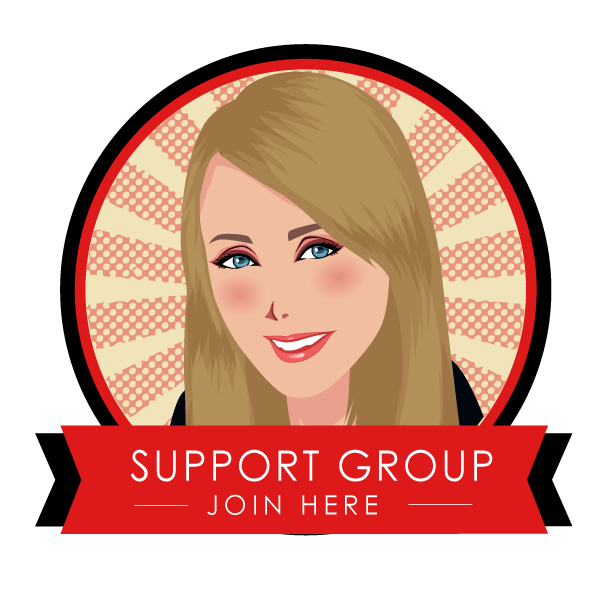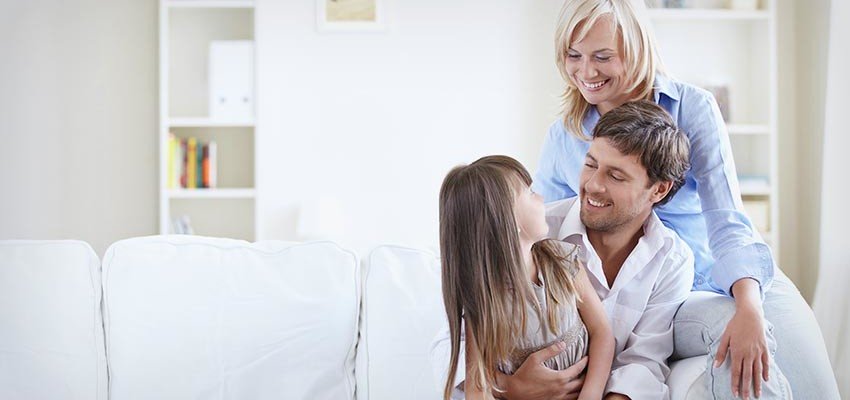Views: 74
Imagine that you’re an infant monkey, and you’ve just been thrown into a cage after several hours in isolation. You’ve been deprived of food, so you’re starving.
Facing you are two adult-looking (fake) monkeys, designed to look like each one could potentially be your mother. On the left is a “wire mother,” equipped with a bottle and feeding tube so you can cling to her and fill your belly with milk. On the right is a “cloth mother,” with no bottle, but with a fuzzy terrycloth exterior that will allow for hours of soft, warm snuggles. You can only run to one of the monkeys.
Which one will you choose?
Six or seven decades ago, many psychologists would have claimed that any affection that we experience towards our parental figures is a purely behaviorist response. After many instances of conditioning a sense of “positive affect” after receiving life-sustaining food from mothers, children associate that positive emotion with these caregivers, an association that serves as the sole explanation for why people “love” their mothers. But that’s not what Harry Harlow thought.
Harlow, a psychologist working at the University of Wisconsin – Madison during the 1960s, believed that there was something more important underlying our affection for Mom and Dad than our primal need to eat and survive. He believed that there was an additional factor: Comfort. 
What Harlow did to test this hypothesis was arguably ingenious, though inarguably cruel.1 Harlow deprived monkeys of food, making them desperately hungry, and then stuck them into a cage where they had a choice of two “mother figures” to run towards. On the left was a wire mother – cold and uncomfortable, yet equipped with a bottle that would feed the baby with life-sustaining nutrients. On the right was a cloth mother – warm, soft, and comfortable, yet unable to provide the infant with any food. If the only reason why we “love” our mothers (and fathers) is based on a conditioned response to our need for food, then the infant monkeys should run to the wire mothers who can feed them every time. Yet that’s not what happened. Not even close.
Time after time, even when desperately hungry, the monkeys would run over to the wire mother just long enough to fill up on milk, and then dash to the cloth mother as quickly as possible to spend the next 17-18 hours snuggling into her warm, comforting body. The infants would sometimes come close to starvation before they would voluntarily leave their cloth mothers to refill their bellies.
The monkeys showed us that when push comes to shove, we don’t love our mothers just because they feed us. We love them because they cuddle us.
http://youtu.be/_O60TYAIgC4?t=1m25s
Harlow’s thinking on this was largely motivated by one of the most important psychologists in our field’s history: John Bowlby, who developed attachment theory in the 1950s based on his observations of young, orphaned boys.
Bowlby determined that our attachment to parental figures (in particular, he argued, to mothers) plays a huge, critical role in our ability to learn, grow, and develop healthy adult relationships. Without a strong attachment, we are destined to be deeply disturbed.2
Whereas Harlow took this research and used it to explore the hypothesis that we have a core motivation for love and affection, a student of Bowlby’s named Mary Ainsworth decided to examine something else: What do the different types of mother-child relationships look like?
How can we characterize them, and what types of parenting behaviors produce different kinds of children? To do this, Ainsworth created a paradigm known as the Strange Situation Procedure.3 The entire thing takes about 20 minutes, and follows a strict sequence of events:
- The parent and the infant enter a laboratory playroom.
- The parent and the infant are left alone. The infant is allowed to freely explore the room and all of the toys.
- A stranger walks in and begins talking to the parent. The stranger then approaches the infant.
- The parent leaves as inconspicuously as possible, leaving the stranger alone with the infant.
- The infant is now separated from his/her parent. The stranger tries to interact with the infant.
- The parent comes back into the room, greeting and comforting the infant.
- The stranger leaves the room, leaving the parent alone with the infant.
- The parent leaves the room again. The infant is left alone in the room (supervised through the mirror, of course).
- The stranger re-enters and again tries to interact with the infant.
- The parent re-enters, greets the infant, and tries to pick him/her up & provide comfort. The stranger leaves.
The experimenters, watching this whole sequence occur through a two-way mirror, are keeping track of the following four critical things:
- How much does the infant explore the environment, doing things like playing with new toys or crawling around?
- How does the infant respond when his/her parent leaves the room?
- How does the infant behave when he/she is alone with the stranger?
- How does the infant respond when his/her parent comes back into the room?
http://www.youtube.com/watch?v=DH1m_ZMO7GU
After watching dozens and dozens of these interactions, Ainsworth soon discovered that there are three main types of attachment styles: Secure, Avoidant, and Anxious. Infants can be separated into these categories based on how they act during the paradigm described above.
- Secure Attachment: Securely attached infants are happy when Mom is around. They are happy to explore the playroom, using Mom as a “secure base” that they can turn to when they get scared or upset, but they don’t feel the need to cling to her. When she leaves, they become incredibly distressed, often crying or refusing to leave the door in the hopes that she will come back. However, once Mom returns into the room, they are happy to be comforted by her, and are soon back to normal. Within a short period of time, they are happy to explore the playroom again, as if Mom never left.
- Avoidant Attachment: Avoidantly attached infants are generally nonplussed or uninterested when Mom is around. They are happy to explore the playroom, but this is mostly because they have no real interest in interacting with Mom. When she leaves, they don’t show obvious distress. When she returns, they don’t seem particularly happy to see her. Overall, these infants seem largely avoidant or disconnected from their mothers.
- Anxious Attachment: Although anxiously attached infants might seem fine in the playroom at first, once Mom leaves, they become incredibly distressed. However, unlike the securely attached infants, they do not return to normal once Mom returns to the room. Instead, they might seem deeply conflicted, alternating between seeming very angry at Mom for daring to leave or clinging to her and continuing to cry hysterically. They do not quickly return to normal and go back to exploring the playroom; they continue to cling to Mom or express anger about the fact that she abandoned them.
These attachment styles are presumed to arise from different “parenting” behaviors, mostly revolving around emotional availability and responsiveness.
Generally, parents will create secure attachment bonds with their children if they are responsive to their needs and emotionally available. This means that when the child wants attention, the parent will reliably provide that attention and care; however, when the child wants to be left alone, the parent will give them an appropriate amount of space to explore and be independent (in a safe way, of course).
Parents might create avoidant attachment bonds with children if they are consistently unavailable, rejecting, or distant. In this case, children learn that their parents are not going to be there for them, so they adopt a pattern of attachment that revolves around being independent to the point of never needing their parents.
Finally, parents might create anxious attachment bonds with children if they are inconsistently responsive. This means that whereas they might sometimes respond to children’s needs, they might be unresponsive just as frequently. Someone who practices this parenting style can be thought of as practicing a fairly self-centered approach to parenting; attention is given when convenient for the parent, even if the child does not want to be held or played with, but not always given when the child wants (or needs) it.
Of course, parents will not always be able to respond to their children’s cries, needs, or wants. No parent is perfect! But these are patterns of behavior that emerge over a long period of time, in which a parent might be unresponsive as often as he/she is responsive, in a completely unpredictable way.
What else does a secure attachment look like? The three most important features of a secure attachment are that the infant will proximity seek (wanting to be close to the mother), use the mother as a safe haven (cling to her when upset or scared), and use her as a secure base (use the knowledge that she is there as a “safety net” to gain the necessary courage to explore the surrounding environment and try new, interesting things without being too scared).
What is truly fascinating is that these attachment patterns can end up influencing how we approach relationships for the rest of our lives! The general idea is that our relationships with our parents create “working models” (or mental representations) of what a relationship “should” look like. Our parents’ levels of emotional responsiveness, availability, and dependability lead us to create mental models that form our concepts of what to expect in relationships throughout our lives.
In the table below, you can see how people with each of the three attachment styles might approach adult relationships as they grow up, including romantic relationships, friendships, and more.
There are even questionnaires that you can take to assess your attachment style within romantic relationships, or your adult attachment to your parents, which asks questions about how much you feel you can depend on your father or whether or not you worry about being abandoned by your mother (I’ve included some great links to a wide range of these “attachment quizzes” at the bottom of this post).
But the nuances of adult attachments are a story for another day… For now, all we need to know is that our mothers (and fathers) are incredibly important. We need love — in some ways, we crave it as much as (or even more than) we crave basic needs like food. The different ways in which our mothers might respond to our wants and needs shape how we interact with others, respond to strangers, and explore our environments, which ends up playing a big role in how we learn and grow throughout our entire lives.
Even into adulthood, our attachments with parents continue to play a huge role, and the models they provide for us about how we should expect other people to respond to us within close relationships can shape what we look for in romantic partners, friends, and colleagues.
Fun Stuff
- What is your attachment style? Try this site for a great quiz http://www.web-research-design.net/cgi-bin/crq/crq.pl
- Free quizes on Personality Style – http://www.personalityassessor.com/
- This site has great free attachment style quizes and personality type quizes http://www.yourpersonality.net/
References
1. It should obviously go without saying that Harlow’s experiments on infant rhesus macaques were incredibly unethical. He raised infant monkeys in isolation, leading to serious mental and emotional disturbances that plagued these poor monkeys for the remainder of their lives. I do not condone this behavior. While I remain glad that there is empirical evidence in support of our core need for love and comfort, and I think the evidence that Harlow established is important for our field and for our understanding of human nature, I am deeply saddened that these theories were developed in this way. Descriptions of Harlow’s experiments on this site should never be taken as an endorsement for the inhumane treatment of animals.
2. I would like to make it very, incredibly, explicitly clear that this statement says NOTHING about any debate on working mothers, working fathers, etc. There are no differences in attachment quality when comparing children of working parents and children with a stay-at-home parent. Bowlby is speaking about children who were, largely, treated like the monkeys in Harlow’s experiments. These were children who were extremely isolated, had no social contact for hours and hours on end, and had absolutely no parental figures present during their formative years. Research has shown that as long as the quality of an attachment is strong when the parent and child interact, it does not matter if that parent happens to be at work for most of the day. Please understand this.
3. All participating mothers provided consent in the original study for these videos to be shared and used for educational purposes in perpetuity.
4. Even though most early attachment research was conducted with mothers as the primary caregiver being observed, attachment relationships with fathers are absolutely crucial.













